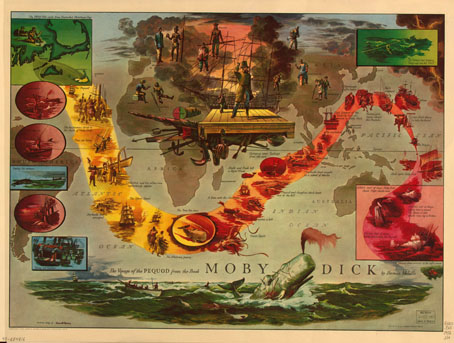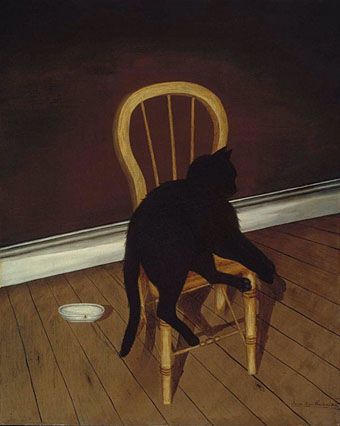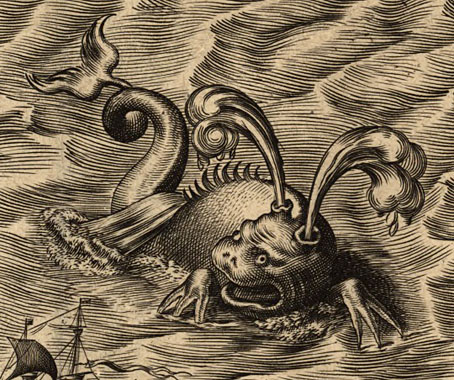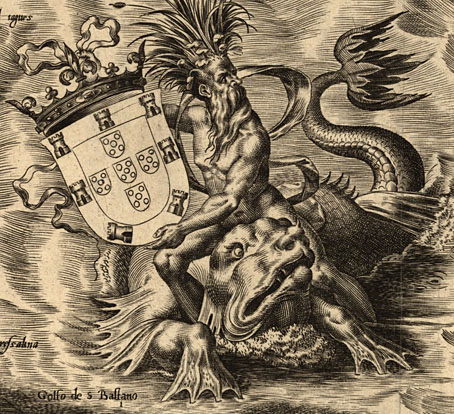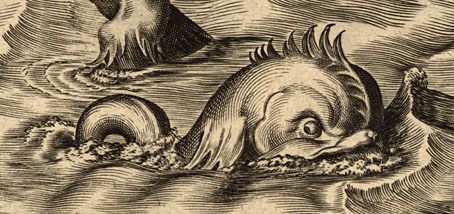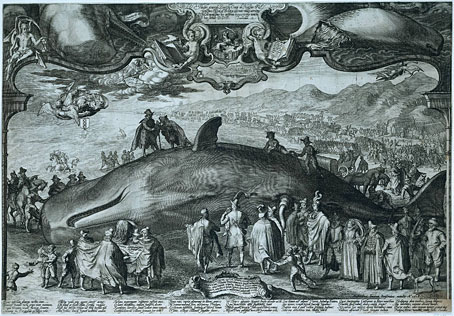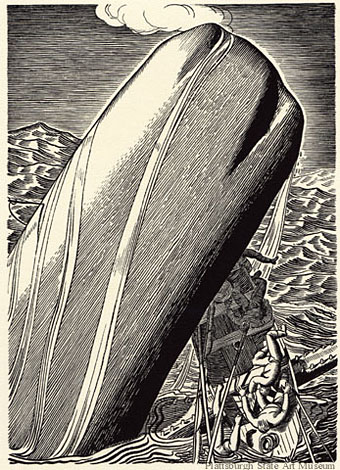American illustrator Everett Henry (1893–1961) created several maps based on classic American novels but The Virginian and The Adventures of Huckleberry Finn lack the epic, globe-trotting qualities of Moby-Dick, one of the few novels where almost every scene takes place in a different part of the world. The linear nature of the voyage also aids Henry’s design with its graded colours and suitably bloody culmination. The use of vignettes in literary maps reminds me most of the charts drawn by Pauline Baynes for Tolkien’s books but there are plenty of other examples, some of which may be seen at VTS.
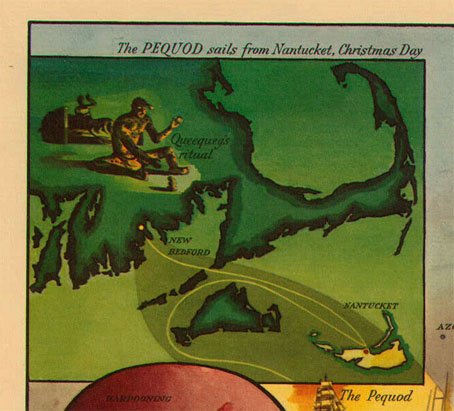
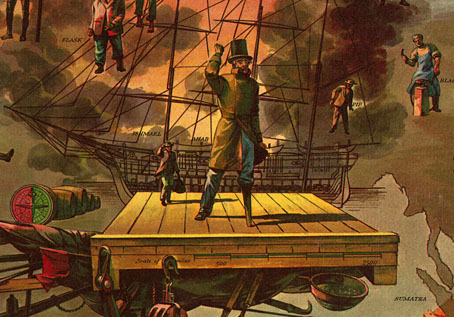
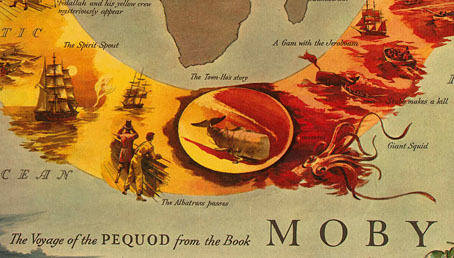
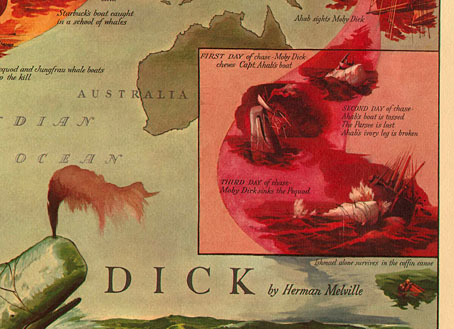
Elsewhere on { feuilleton }
• The illustrators archive
Previously on { feuilleton }
• Of the Monstrous Pictures of Whales
• Jan Saenredam’s whale
• The Whale again
• Rockwell Kent’s Moby Dick
• Pauline Baynes, 1922–2008

